

Max Davies
2026 Ram 1500 Rebel review
5 Days Ago
The VTi-S appears the pick of the Civic hatchback crop if you’re after style and space on a reasonable budget.
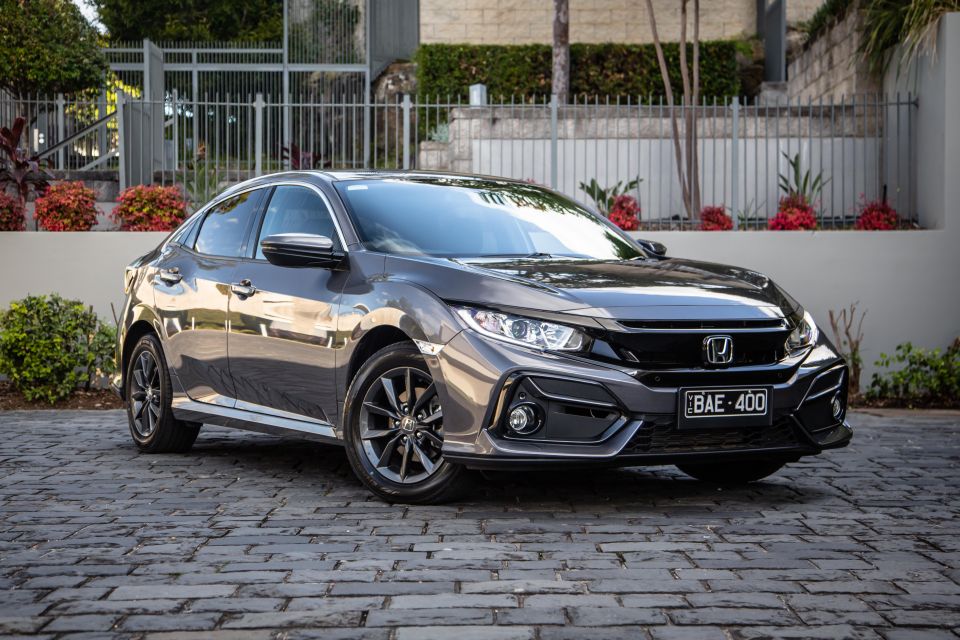
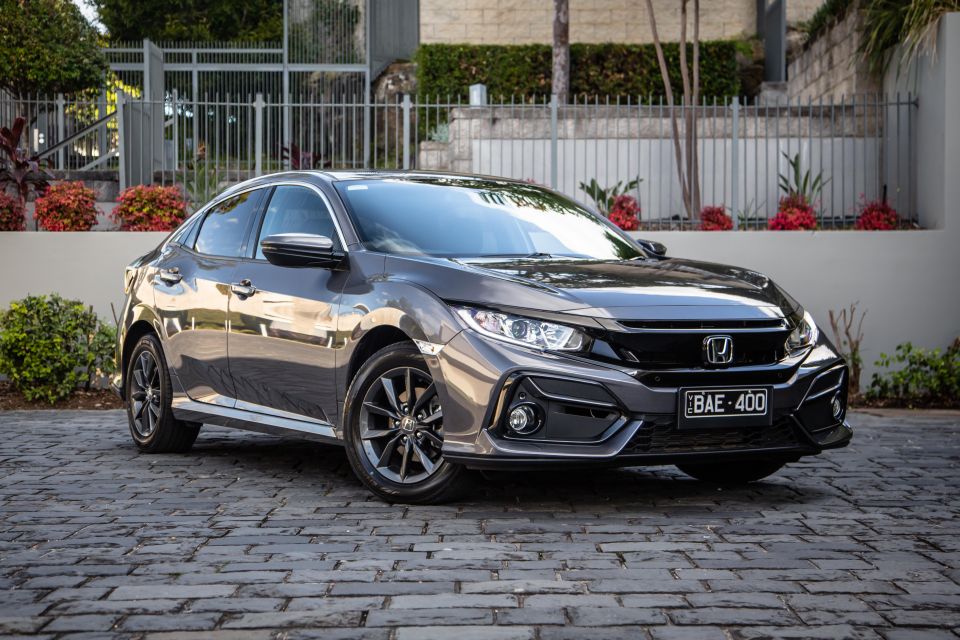

Journalist
New from
$22,390
excl. on-roads

Journalist
New from
$22,390
excl. on-roads


Journalist
New from
$22,390
excl. on-roads

Journalist
New from
$22,390
excl. on-roads
Quickly see how this car stacks up against its competition. Select any benchmark to see more details.
Where expert car reviews meet expert car buying – CarExpert gives you trusted advice, personalised service and real savings on your next new car.
Ten generations, 25 million examples and almost a half-a-century innings, Honda’s longest-running and biggest-selling nameplate, the Civic, has quite some providence.
A light touch-up for the MY20 sedan and hatch version might register as blip in the annals of the not-so-small-car-any-more’s history, that has seen sweeping changes since the humble ‘jelly bean’ first generation arrived in Australia back in 1973.
Our tester is the Honda Civic VTi-S, one up from base VTi in the five-strong Thai-built mainstream range, discounting the mighty UK-manufactured Type R mega-hatch. It’s the go-to variant if you’re chasing practicality with a bit of a sporting veneer and don’t mind making do with run-of-the-mill motivation that brings with it relatively affordability.
So what’s to gain or lose when plucking the newly refreshed Civic five-door at a tenner under $25,000?

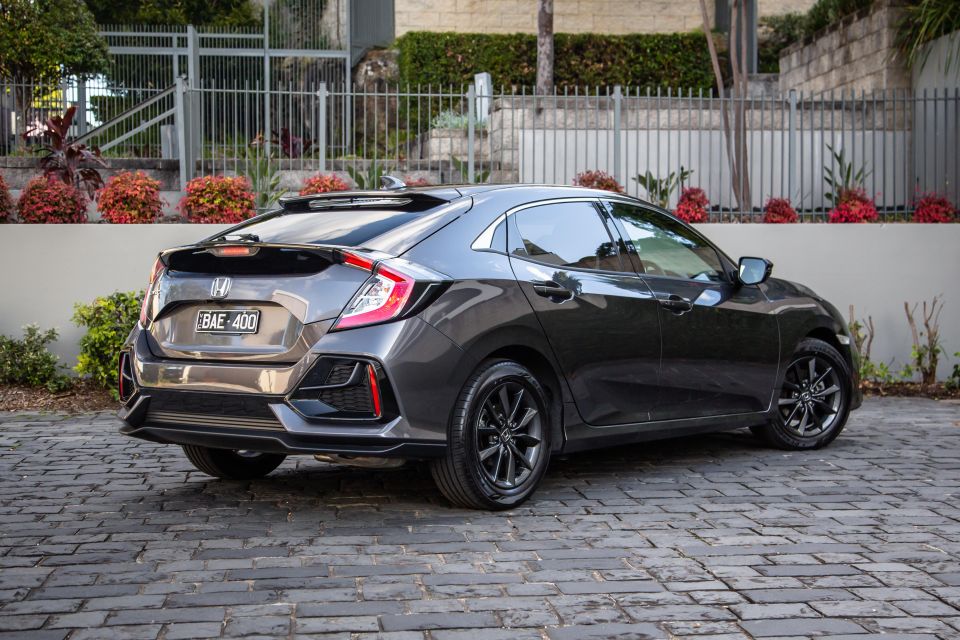
The handsome and angular VTi-S Hatch clocks in at $24,990 before on roads. That’s a $500 rise over 2019 pricing and $200 above than its equally stylised and angular Sedan twin.
In range, the VTi-S shares the same 1.8-litre naturally-aspirated powertrain as the more basic VTi ($22,790 list) and is a sizeable $9100 more affordable than the full-fruit VTi-LX which, like variants sat above our test car, features 1.5-litre turbo power.
At the time of writing, Honda has four- and five-door Civic ranges on drive-away offer with the VTi-S Hatch priced around the mid-$28,000 mark, the key sweetener being seven years of warranty and roadside assistance, over and above its usual five-year warranty terms.
Colour wise, there’s a choice no-cost solid white or six different metallic/pearl finishes, such our tester’s non-more-grey Modern Steel metallic scheme, that command an extra $650.
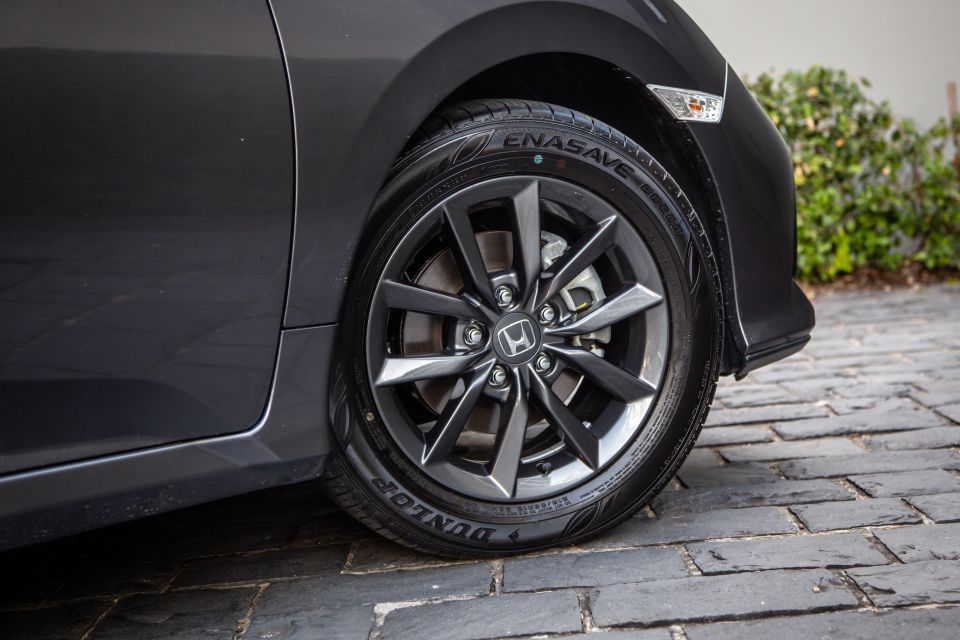
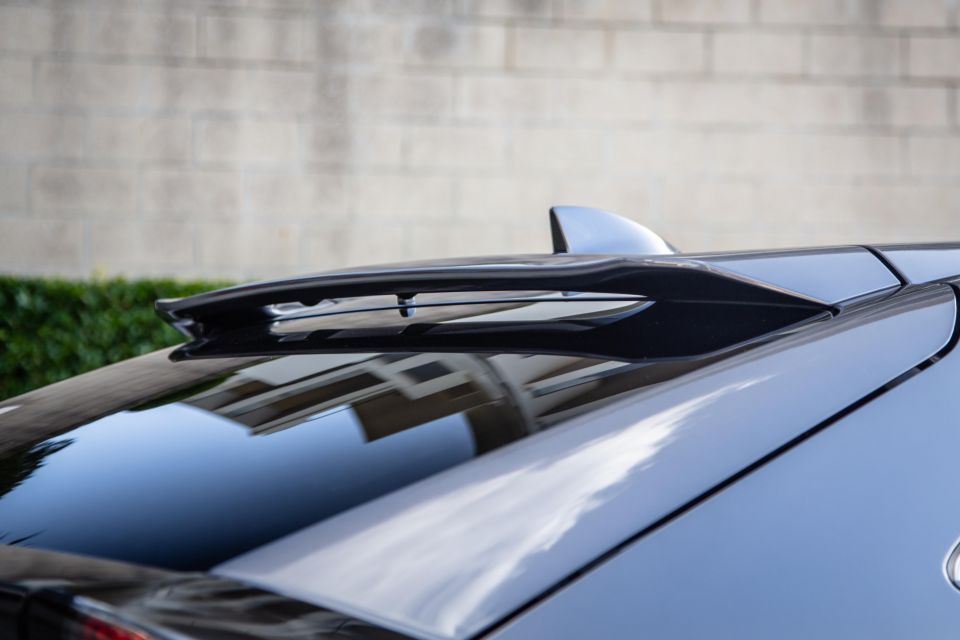
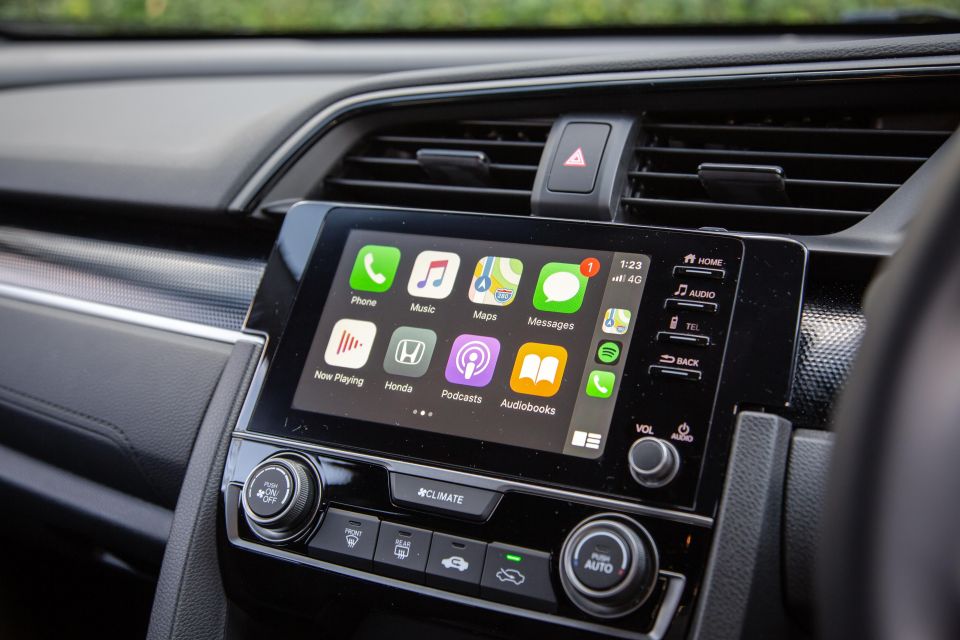
Buy your new car without the stress. It's fast, simple and completely free.

Great service from Travis and team, second time I have used this business would not hesitate to recommend them to anyone
Craig C.
Purchased a Ford Ranger in Sunshine Coast, QLD
CarExpert helped Craig save $7,224 on his Ford Ranger, now let us save you on your next new car.
Get your BEST priceThe MY20 updates include a redesigned grille and front and rear bumpers and new look wheels, which are 16-inch on VTi-S and don’t really do Civic’s heavy and edgy styling as much justice as the 17s and 18s fitted on higher-spec variants. Lighting is halogen with LED daytime running lights, rear strips and mirror-mounted indicators, while parking sensors are fitted front and rear.
Inside, the instrument panel has been updated and Honda as introduced an assortment of controls – buttons, keys, a volume knob – to improve the user interface. The 7.0-inch touchscreen infotainment system fits Apple CarPlay and Android Auto smartphone mirroring and 160-watt eight-speaker sound but misses out on DAB+ and proprietary sat-nav elsewhere in the Civic range.
The wheel is leather wrapped and Honda has also spruced up the seat trim with new chequered accents though, in short, much of the MY20 update is subtle and easily overlooked. The spec list fills out with a single-zone climate control, a three-view reversing camera, Honda’s nifty LaneWatch mirror-mounted side camera, push-button start, dual USB and single HDMI ports, rear screen wiper and space saver spare.
LaneWatch and nice, large LCD driver’s instrumentation apart, the feature set looks short on indulgence though there are no glaring omissions and it covers bases well for its $25,000 ask.

This grade of Honda Civic fits dual front, side and curtain airbags, ABS, electronic brake force distribution, brake assist, stability and traction control, tyre deflation warning, hill start assist and ISOFIX child seat anchorage outboard in row two.
Add the three-view camera, LaneWatch camera and the nifty sounding Agile Handing Assist (brakes an inside wheel when cornering when needed) and Straight Driving Assist (which isn’t lane keeping) and it appears as if the VTi-S is up to its wheel nuts in safety garb.
In fact, the Civic Hatch range (bar Type R) was awarded five stars by ANCAP back in 2017 where it scored 34.68 out of 37 overall.
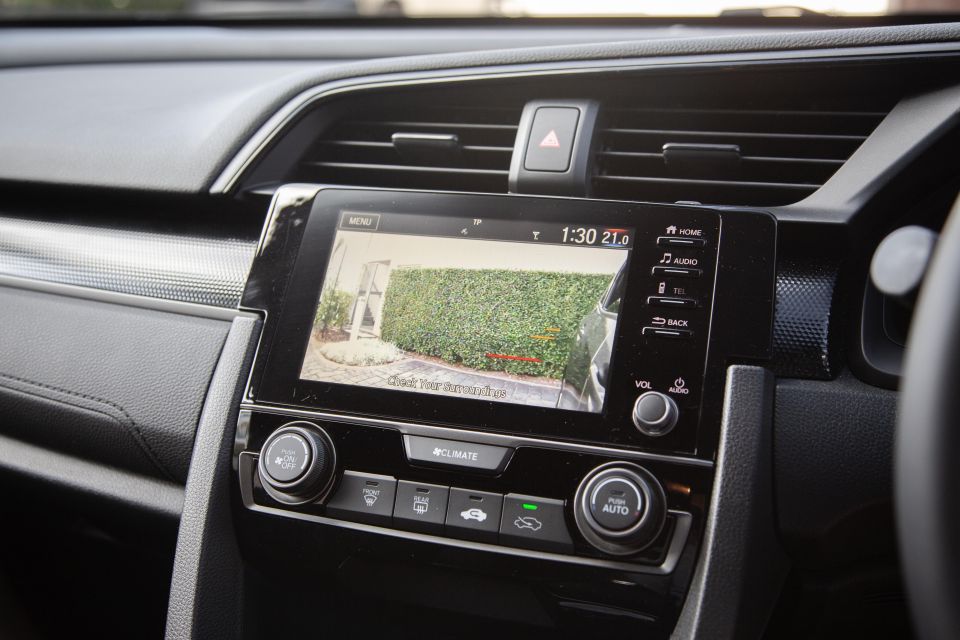
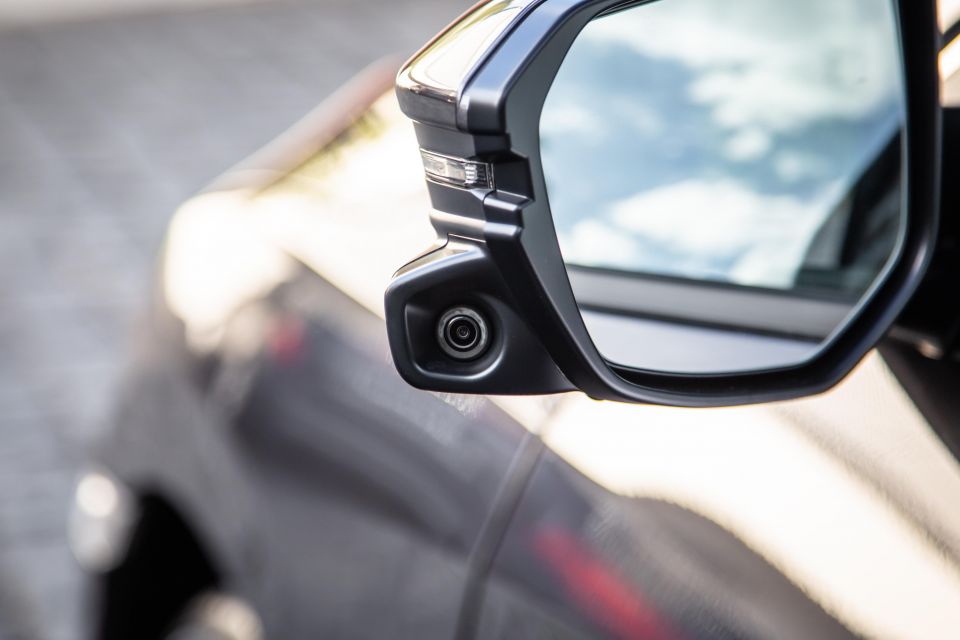
However, there’s no autonomous emergency braking, either standard or optionally. Instead, that’s part of the suite of active safety gear called Honda Sensing, which also bundles in forward collision warning, the gamut of lane departure warning/lane keeping/road departure mitigation to keep it on the black stuff, as well as auto high beam headlight functionality and adaptive cruise control – all now fitted as standard in higher-spec turbo variants.
So while it’s admirable VTi-S fits the aforementioned inclusions, the lack of AEB is a sizeable shortcoming. If you consider that essential fitment, as a good many do, you’ll need to stump up another $3400 for the VTi-L, which is a fair step-up in investment at this price point.
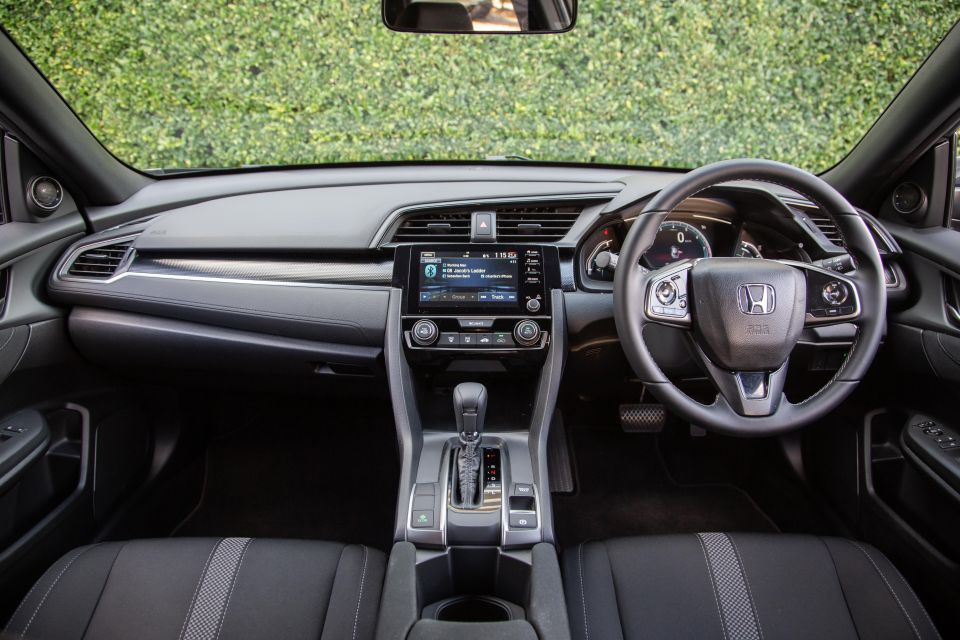
The Honda Civic Hatch’s cabin is its real strong point, a combination of style, design and sheer size punching above its weight for a budget-conscious small car.
The techno-Japanese aesthetic mightn’t be to all tastes, but it’s certainly more of a celebration than your average hatch almost despite the near total grey-out colour scheme. And there’s an innately sporty bent in the driving position, high centre console and seating that mechanically adjusts from low to almost bum-on-the-Tarmac low.
While it’s tempting to dump the driver’s seat to Porsche 911 levels, the driving position is fatiguing on the back on longer trips.

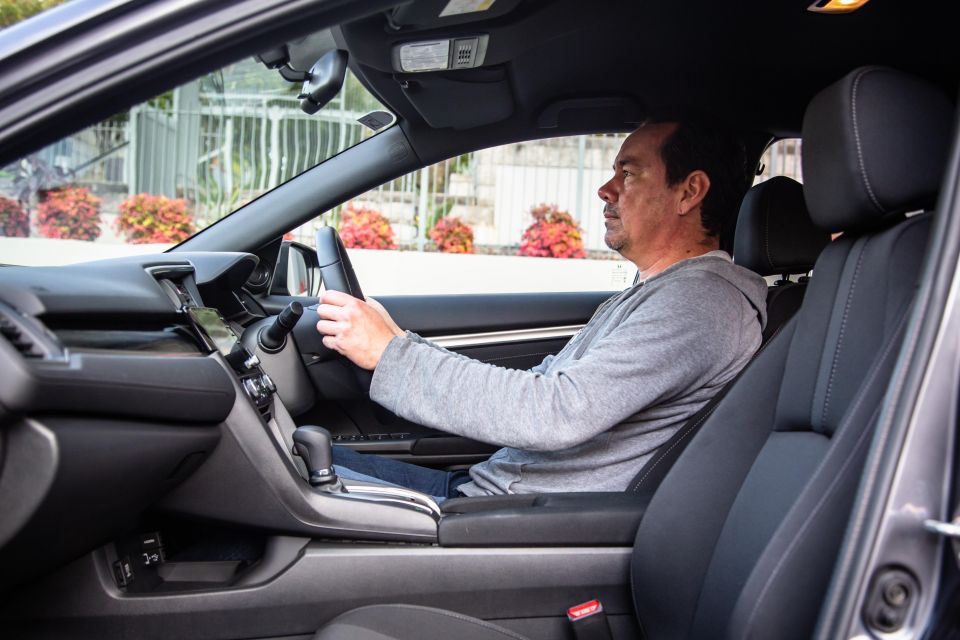

The seats themselves are great, with good lateral and lumbar support up front, while the rear bench is shapely and adult-oriented in the outboard positions. Row two transcends merely ‘roomy’ and is downright remarkable for space though, if you want to nitpick, the low-slung roofline does hinder outright headroom a touch.
There are plenty of design tricks that make it feel rich for its outlay: the waxy leather wheel rim, the snazzy LCD instrumentation, nicely presented infotainment and a deft use of ornate trim inlays in soft fabric touch points in conspicuous places. Bar the horn cap, cheap and shiny plastics and other cost consciousness is located out of eyeshot.
The 7.0-inch touchscreen system is decent, an improvement over the recently defunct older system if largely unremarkable. The new shortcut buttons and volume control make for quicker, more intuitive use of climate and audio controls, as intended.
Less convincing is the strange semi-hidden ‘alcove’ with dual USB ports that keeps your phone tucked away while charging, though it’s really fiddly to access. The console bin itself is enormous, with a clever sliding top and novel dual-cup-holder arrangement that allows you to stow one atop the other to create more oddment space.
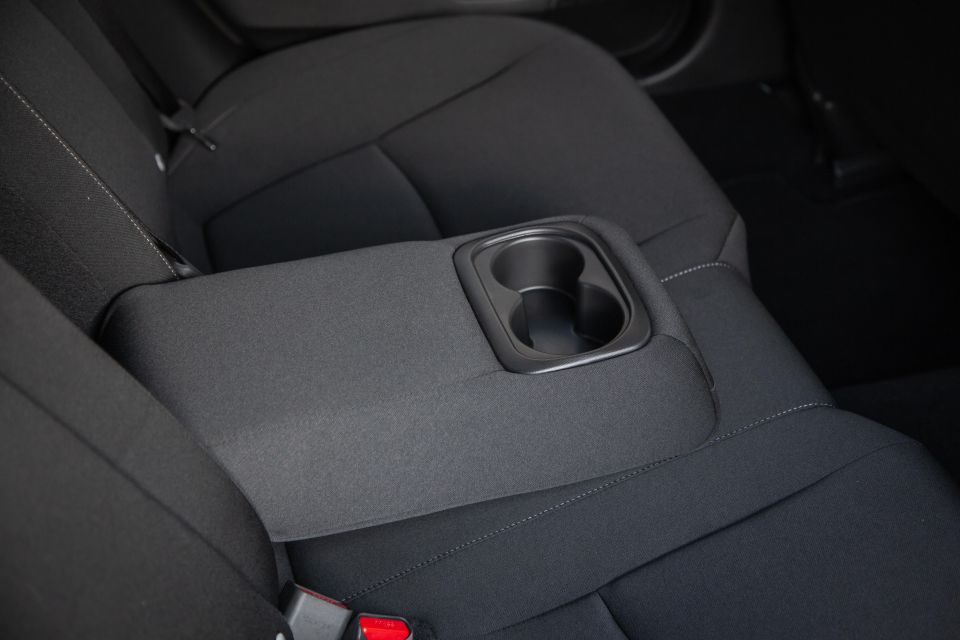
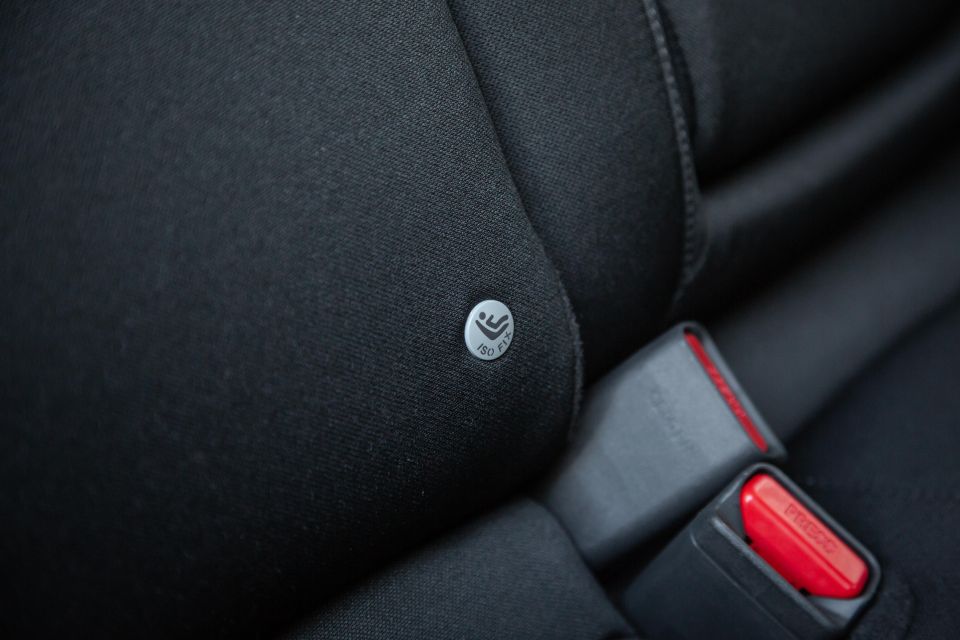
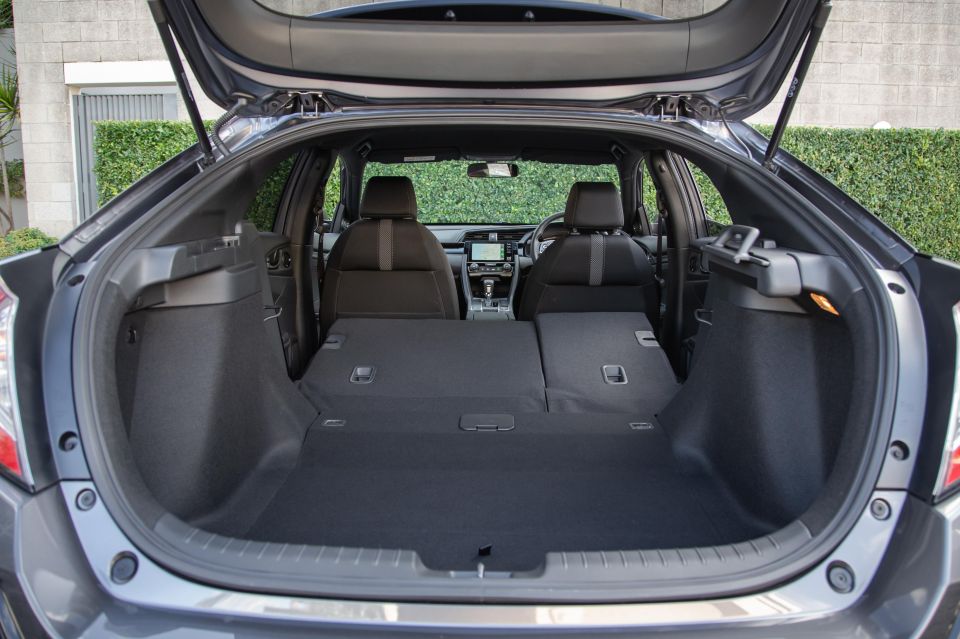
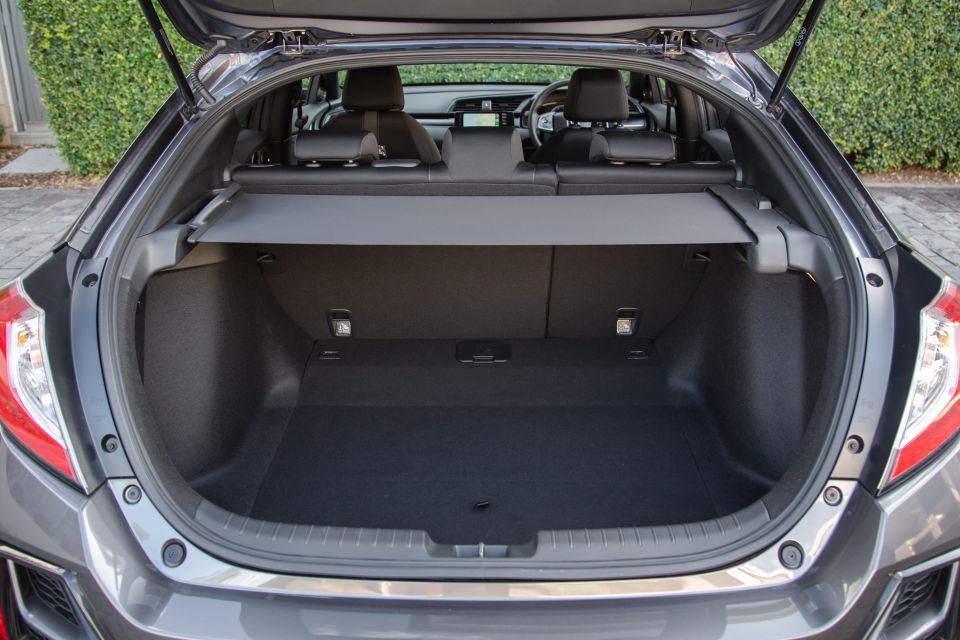
There’s also a third USB port tucked away in the bin, an afterthought inclusion to run a cable to rear occupants given there are no ports or even air-vents in the rear fascia of the console.
Still, there’s plenty of small stuff such as the new control array, the one-touch window power for both front occupants, the fabric headlining and nice carpeted mats that conspire together for a nice upmarket ambience for its $25k ask.
At 414 litres, the boot space is large compared with most five-door competitors, if somewhat smaller than a VTi-S Sedan (525L). But unlike the ‘port’ arrangement in the four-door the Hatch’s 60:40 split-fold rear seating stows and fabric ‘stretch’ parcel shelf retracts to reveal an almost van-like cargo areas as a two-seater.
Look no further for proof that you don’t need an SUV for supreme utility in a small vehicle.

Like the entry VTi, the VTi-S fits the humble 1.8-litre naturally-aspirated four outputting a modest 104kW and a humdrum 174Nm, that latter well up in the rpm band at 4300rpm. By comparison, the higher-spec if smaller-capacity 1.5 turbo engines produce a markedly more fulsome 127kW and 220Nm from just 1700rpm.
The only transmission offered is a CVT automatic driving, of course, the front wheels.
Honda makes no performance claims though advertised combined consumption is 6.4L/100km, which is a little tardier than the 6.1L figure of its turbo brethren. During our week with the VTi-S, it returned high sevens, which while short of the maker’s assertion is actually quite a decent real-world return.
Both engine types run happily on regular old 91RON fuel.
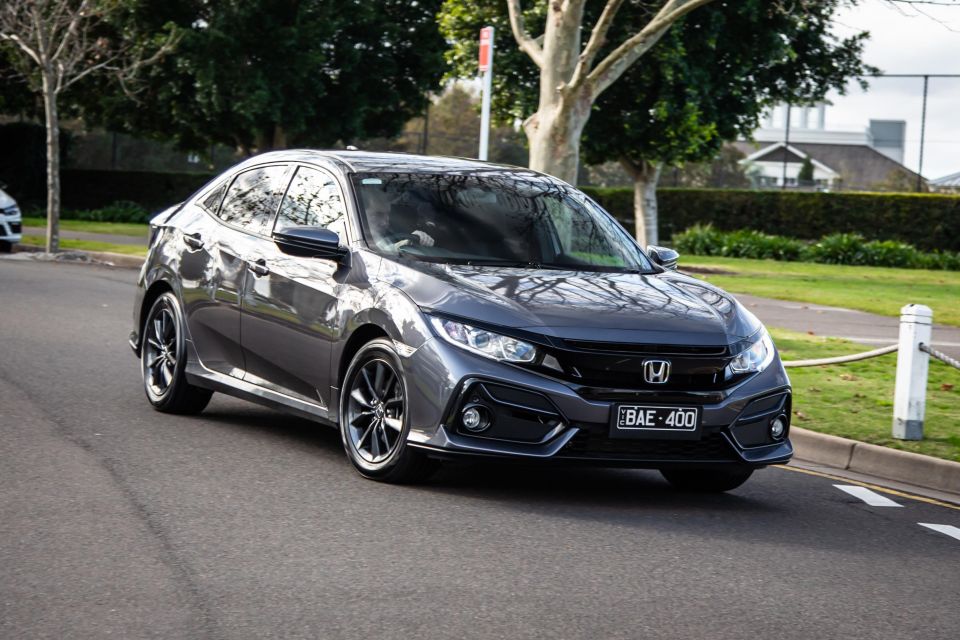
The VTi-S Hatch’s reasonably light 1261kg kerb weight does do the modest engine a few favours. Despite that high torque peak, the five-door is quite responsive off the mark and at lower urban speeds. Exiting side street it’s swift enough, too. It’s only really once you dig in, when overtaking and in rolling acceleration, that the 1.8-litre four’s shortchanged nature becomes obvious.
Still, on balance, the powertrain is mostly satisfying (enough). It’s quite refined under load doesn’t feel or sound too strained, the default D mode balances response and efficient running fairly well, while S-for-sport, which hovers the tacho needle up around the 2000-3000rpm band, makes it feel reasonably swift… even if it perhaps actually isn’t.
In short, for what it is, the powertrain calibration is polished to make for a driving dignity that’s sometimes lacking in the affordable end of the small car segment.
The same sense of quality is evident in the ride and handling balance. Sat on narrow 215mm tyres with chunky 55 aspect ratio tyres, it’s perhaps the least spirited Civic for sheer grip, but it retains a nice clarity and a light-on-its-feet feel that’s a bit of a hallmark of the Honda breed. It’s easy to judge and place on the road, and even rewarding once you warm up the pace a little.
No matter how it’s driven, it rides well. The full independent chassis has a pliant quality, the damping settles quickly and there’s decent body control. Be it lumpy surfaces or harsh speed bumps, it’s quite unflappable in composure, and quiet too – Honda seems to have put the effort into sound deadening and it pays noticeable dividends.
Despite the low-slung seating, outward visibility is good – bar the visibility-obscuring rear wiper – and the compliment of multi-view camera and sensors front and rear makes it easy to park. It’s turning circle, too, is a concise and handy 10.7 metres.
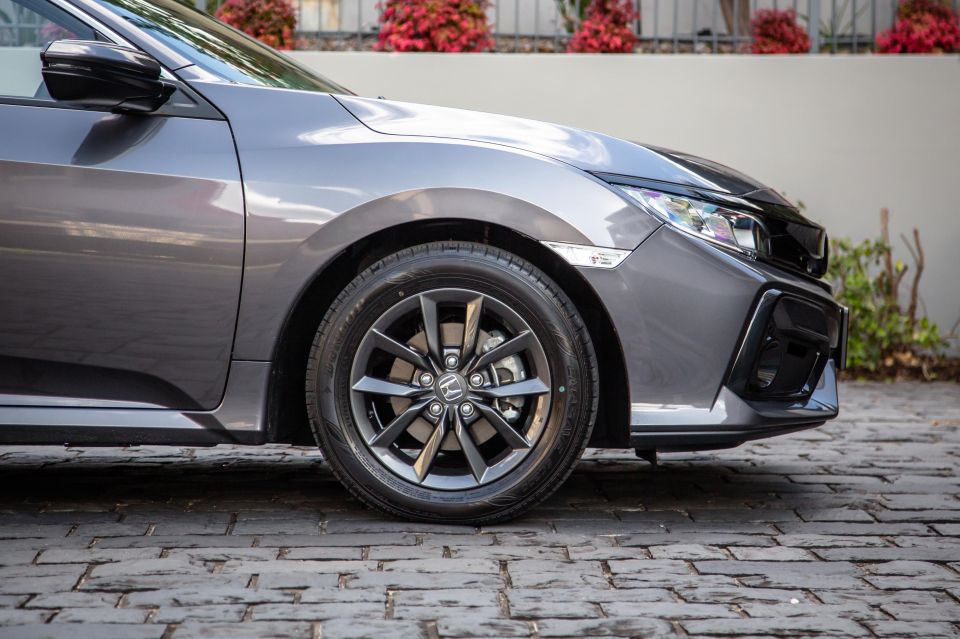
The Honda Civic is usually covered by five-year/unlimited-kilometre warranty terms though, as mentioned above, Honda has recently extended to seven years of surety (including roadside assistance) for special driveaway offers.
Servicing requires common 12-month regularity if capped with short 10,000km intervals, with the first five intervals capped at $299 per basic service, not including ‘adaptive’ items such as various filters and fluid.
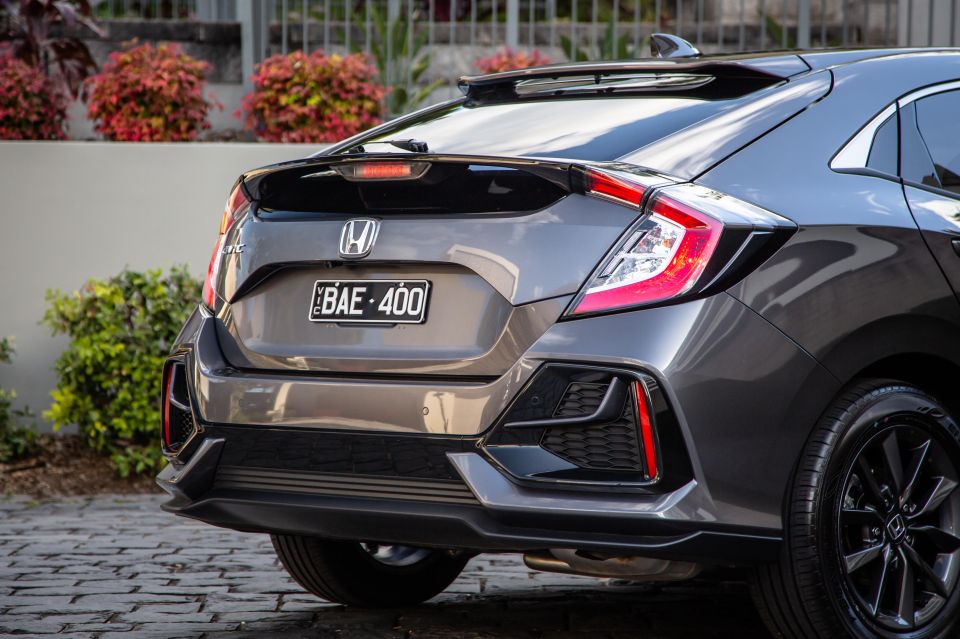
Buy your new car without the stress. It's fast, simple and completely free.

Great service from Travis and team, second time I have used this business would not hesitate to recommend them to anyone
Craig C.
Purchased a Ford Ranger in Sunshine Coast, QLD
CarExpert helped Craig save $7,224 on his Ford Ranger, now let us save you on your next new car.
Get your BEST priceHow does the Honda Civic VTi-S Hatch fare as a wallet-friendly $25k small car prospect? Quite well indeed.
General presentation, cabin ambience, depth in the driving experience, space and the equipment goodies bag combined into a prospect that in some places meets expectation, in others exceeds it. It’s an easy car to like and to spend time in and it doesn’t feel corner cut in much way at all.
As a combination of underpinned resolve and feel-good features and traits in the right places, the low-spec Civic five-door has much going for it. It’s just a shame that lack of autonomous emergency braking smarts really compromises its otherwise fighting fit credentials.
Also, while that 1.8 ‘atmo’ powertrain is acceptable one or even two up around town, once you start loading its spacious cabin and boot with loved ones and luggage – as many buyer might – performance and on-road dignity tends to plummet sharply.
As a surrogate family hauler, the lustier 1.5 turbo-equipped and active safety-packed VTi-L really looks like an extra $3400 wisely invested.
Where expert car reviews meet expert car buying – CarExpert gives you trusted advice, personalised service and real savings on your next new car.


Max Davies
5 Days Ago


Max Davies
4 Days Ago


Neil Briscoe
3 Days Ago


Max Davies
2 Days Ago
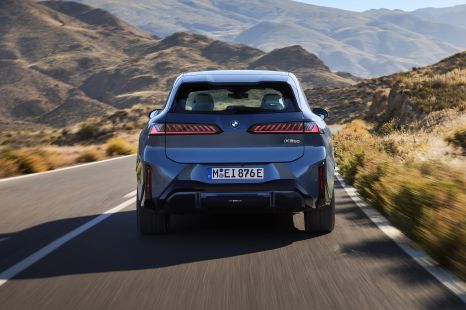

Alborz Fallah
12 Hours Ago


Damion Smy
12 Hours Ago